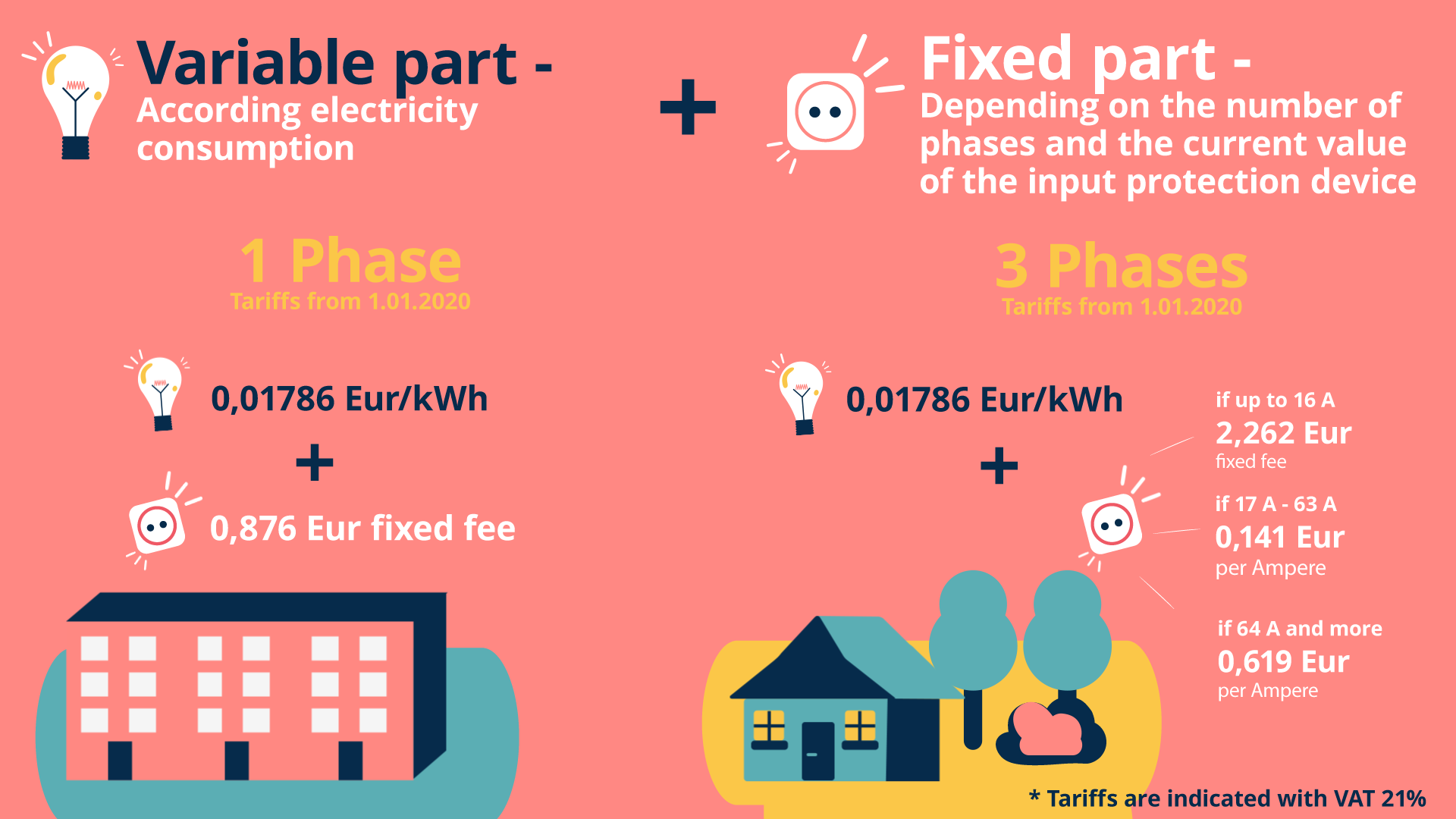What is the MPC?
At the end of each month, both companies and households receive a bill for the electricity consumed during a certain period of time. For one company, this monthly payment for the electricity used can include costs related only to the electricity used for lighting or daily needs. For another company, the costs can also include the electricity used for hot water heating or even heating of work premises, if they are not provided otherwise. But what exactly does the monthly electricity payment consist of, what is the mandatory procurement component (MPC), for which companies have to set aside funds every month, and what factors influence the amount of the total payment?
The total monthly payment of a household or a company for the mandatory procurement component consists of two parts: a fixed one and a variable one, which are provided for in the payment calculation procedure.
The fixed part of the payment known as the power component depends on the voltage level of the selected electricity connection and its consumption group. For example, single-phase electricity connection is most common in apartments, as they do not require as much power as companies or private houses, which are more often provided with three-phase electricity connection.
The variable part of the payment is determined in proportion to the electricity consumption in the specific period of time. Thus, for those households or companies that consume more electricity, the monthly payment will also be proportionally higher.

The above-mentioned mandatory procurement component is a State-established support mechanism for environmentally friendly electricity producers.
It provides that producers, which generate electricity in the efficient cogeneration mode, may acquire the right to sell the final product obtained through mandatory procurement. Similarly, producers that generate electricity from renewable energy sources may acquire the right to sell it in the above-mentioned manner through mandatory procurement.
This is the way in which the State provides its assistance to electricity producers, whose goals and direction of development are related to environmentally friendly principles. The effect of investment in producers that base their work on the principles of ecological thinking, achieving them with environmentally friendly solutions, can be immeasurable in the long run.
The mandatory procurement component is paid by all Latvian end consumers of electricity, i.e. by companies and households, in proportion to the amount of electricity consumed in the specific period of time.

However, not all of the mandatory procurement component is covered by owners or tenants of the premises. The State, the creator of the mandatory procurement mechanism, is also involved in this process. Compulsory procurement costs are compensated not only by monthly payments of electricity consumers, but also by a targeted grant from the general budget of the Latvian State.
From the very beginning, in order to determine the procedure for calculating and approving the costs of the mandatory procurement component, the Public Utilities Commission (PUC) developed an appropriate methodology for its calculation. This methodology determines the procedure by which the electricity trader calculates and the Public Utilities Commission approves the components that compensate the additional expenses incurred by the electricity trader in the mandatory procurement. They are compared with the procurement of an equal amount of electricity in the relevant market, as well as the costs due to payments for installed electrical capacity in cogeneration plants and power plants using biomass or gas.
The amount of the mandatory procurement component is determined by the amount of purchased electricity and the price paid for the purchase, which was performed within the framework of the mandatory procurement of the previous year. One of the factors influencing the price of the mandatory procurement component is the price of natural gas. As it increases, payments for the component increase too.
The price is also affected by electricity consumption and the price of electricity on the exchange. In contrast, an increase in one or both of these two factors reduces the amount of the mandatory procurement component, which in turn reduces the amount to be covered by the funds of the electricity consumers and the targeted grant.
Green electricity generation also makes a positive contribution to achieving various other goals in a wide range of sectors. Electricity generation in the cogeneration mode or from renewable energy resources can reduce the use of fossil fuels for electricity generation and the associated damage to the environment and human health. In this way, making a small but positive contribution to such a distant, but important sector as medicine.
By reducing the purchase of energy resources in foreign markets, it is possible to stabilize the country’s external balance of payments. The production of environmentally friendly electricity will continue to increase the country’s energy independence in the long run too. As most of the power plants are located outside Riga, they also contribute to the development of the regions to a certain extent.